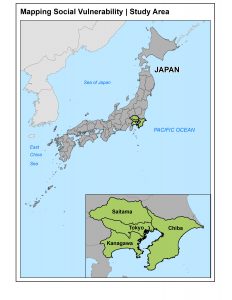The Tokyo Metropolitan Region includes populations from 4 neighbouring prefectures: Tokyo, Saitama, Chiba and Kanagawa. The amalgamation of these metro areas results in a mega city with approximately 38 million people and is considered the largest city in the world. The city’s staggeringly high population along with the fact that many of the city’s households are single-occupant, and the ageing nature of the population, raise concerns around social isolation. With over 40 million Japanese over 65, and many living alone, elderly populations face increased risk of isolation as they are more likely to be burdened with mobility and other health issues that may keep them confined to their homes.
The amalgamation of these metro areas results in a mega city with approximately 38 million people and is considered the largest city in the world. The city’s staggeringly high population along with the fact that many of the city’s households are single-occupant, and the ageing nature of the population, raise concerns around social isolation. With over 40 million Japanese over 65, and many living alone, elderly populations face increased risk of isolation as they are more likely to be burdened with mobility and other health issues that may keep them confined to their homes.
Our research identifies populations susceptible to social isolation in the Greater Tokyo area. Vulnerability to social isolation was assessed using demographic data from Japan’s 2015 census as well as spatial data of metro rail lines and medical facilities. Through an analytical hierarchy process, criteria were weighted and compared in order to create a social isolation index. This index was in turn used for hotspot analysis to identify areas of high social vulnerability. We also conducted grouping analyses which corroborate the results of the hotspot analysis.
At-risk populations tend to cluster at the periphery of the region, including hillside and coastal areas where population density is low and access to services limited.
Some scholars assert that the risk of social isolation is exacerbated following a major natural hazard (Inoue, et al, 2014); as such, natural hazard areas were added to the social isolation cluster maps to identify areas that face increased risk from natural disasters.